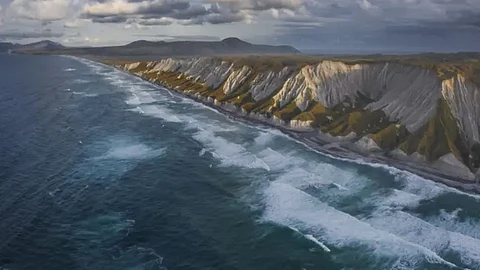

A massive 8.8-magnitude earthquake struck off Russia’s remote Kamchatka Peninsula on Wednesday, triggering tsunami warnings and evacuation orders across the Pacific, including in Japan, Hawaii, and the west coast of the United States. Authorities reported tsunami waves of up to four metres along parts of Russia’s eastern coast, as emergency officials and scientists warned that the full extent of the impact remains uncertain.
The quake was the strongest recorded in the region since 1952, according to the Russian Academy of Sciences. The US Geological Survey (USGS) said the earthquake struck at a shallow depth of 19.3km and was centred 126km east-southeast of Petropavlovsk-Kamchatsky, a port city along Russia’s Avacha Bay.
Kamchatka’s governor, Vladimir Solodov, described the quake as “serious and the strongest in decades”, noting that a local kindergarten had also sustained damage.
The US Tsunami Warning System issued alerts for “hazardous tsunami waves” within the next three hours along coastlines in Russia, Japan, Alaska, and Hawaii. Warnings and watches were also in effect for the US Pacific coast, including California, Oregon and Washington, as well as the US territories of Guam and Micronesia.
The US Tsunami Warning Centre said waves as high as 3 metres could hit Ecuador, while surges of 1 to 3 metres were possible along the coasts of Chile, Costa Rica, French Polynesia, Guam, and Japan. Smaller waves—up to 1 metre—were forecast for parts of Australia, Colombia, Mexico, New Zealand, Tonga and Taiwan. Waves under 0.3 metres were expected along the shores of Brunei, China, North Korea, Malaysia, South Korea, and Vietnam.
Despite the widespread warnings, the earliest waves that reached parts of Japan were smaller than expected, measuring around 30 centimetres in Hokkaido.
Japan’s eastern coastline, which suffered massive devastation during the 2011 tsunami disaster, was placed under evacuation orders affecting more than 9,00,000 residents across 133 municipalities.
The quake’s epicentre was located about 250km from Hokkaido, Japan’s northernmost island, where tremors were felt mildly.
The US National Tsunami Warning Centre in Alaska issued warnings for parts of the Aleutian Islands and tsunami watches for the west coast states. Advisories were also issued for large parts of Alaska’s coastline, including the panhandle.
Seismologists noted that even distant quakes can cause dangerous tsunamis if the epicentre is shallow, as was the case with Wednesday’s quake.
The Pacific "Ring of Fire" is among the most seismically active areas in the world. Kamchatka itself has experienced a series of strong earthquakes in recent weeks. Earlier in July, five powerful quakes—including one of magnitude 7.4—struck offshore in the same region.
The last time Kamchatka experienced a quake of similar magnitude was in November 1952, when a magnitude 9.0 event generated tsunami waves as high as 9.1 metres in Hawaii. Despite the size of that quake, no deaths were officially reported.